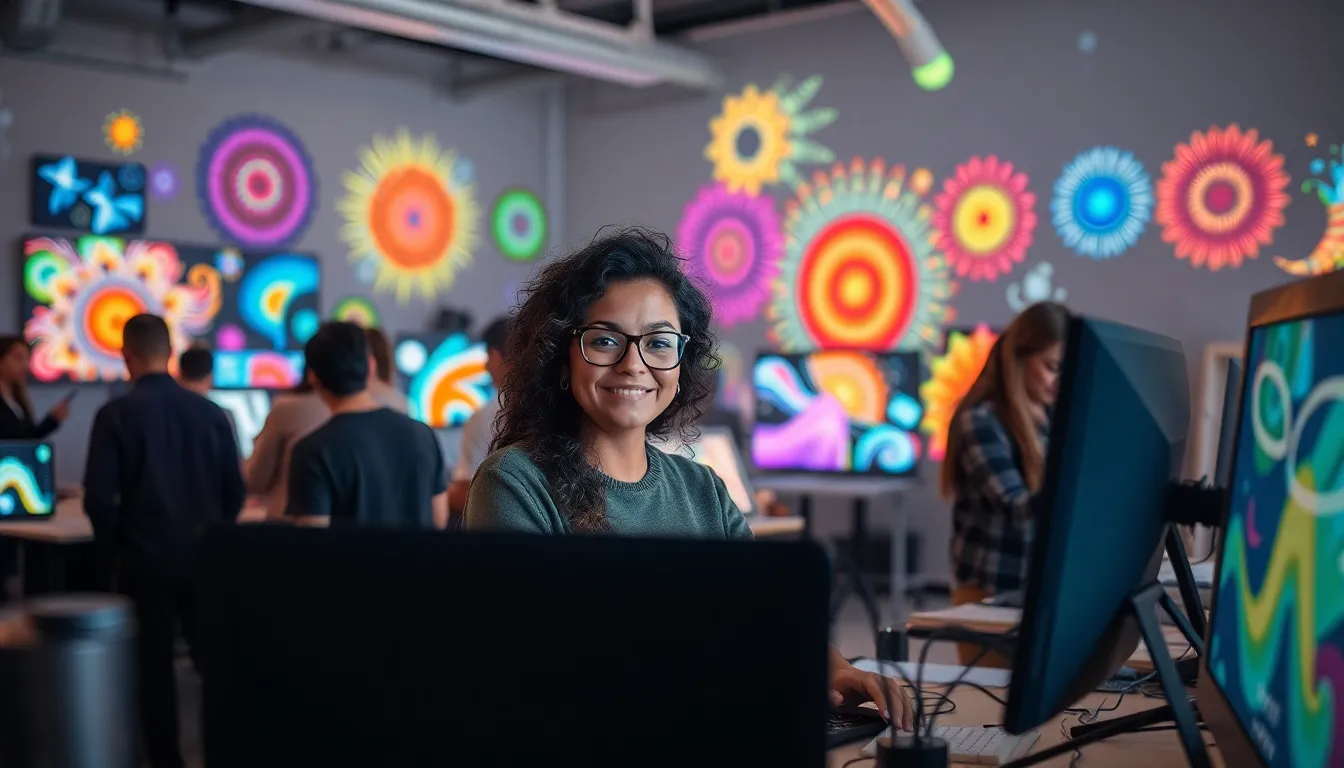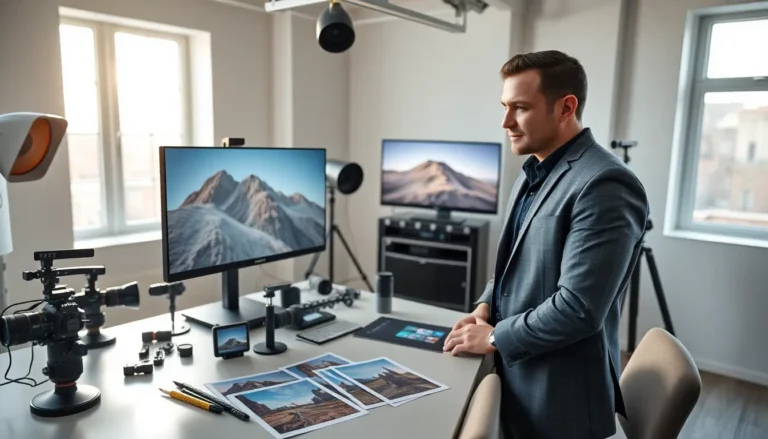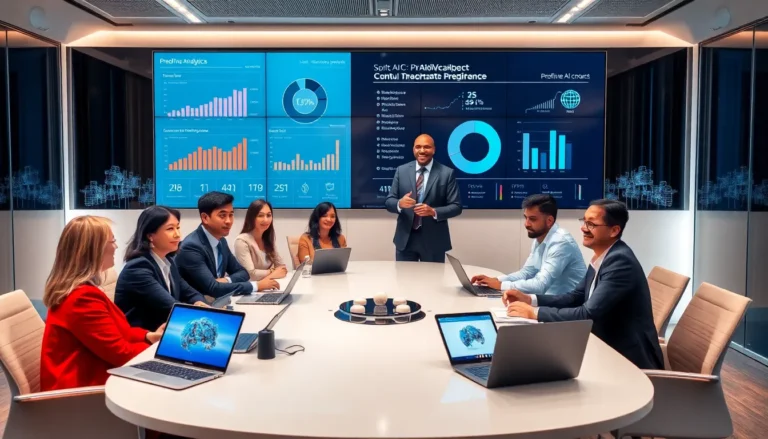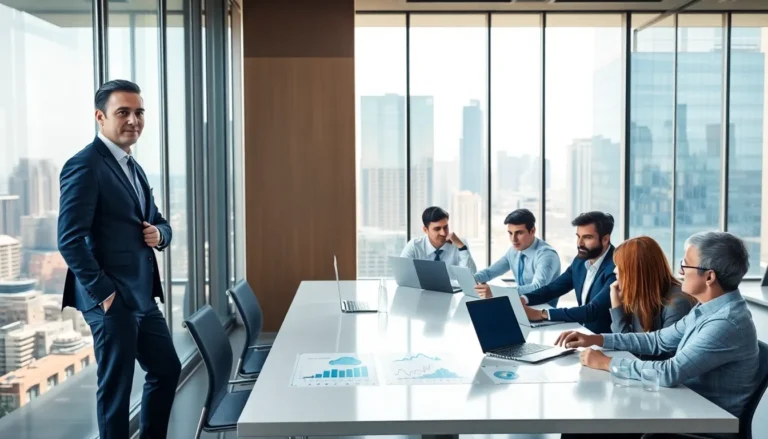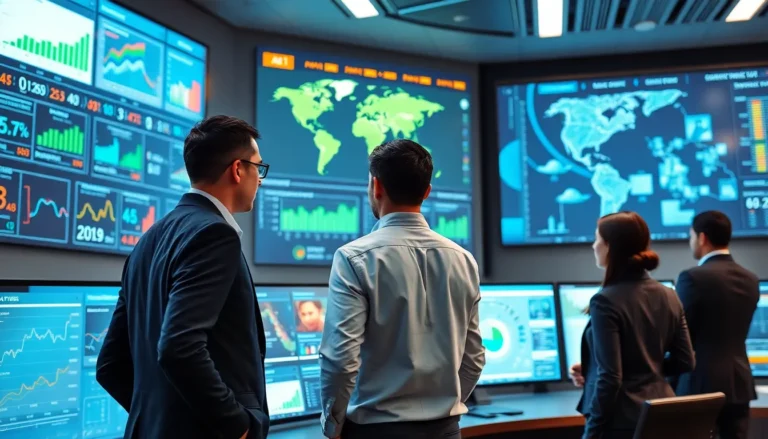Table of Contents
ToggleArtificial intelligence isn’t just a buzzword anymore; it’s the new Picasso of the digital age. Imagine a world where machines whip up art faster than you can say “Mona Lisa.” From breathtaking landscapes to quirky cartoons, AI is redefining creativity, making it accessible to everyone—even those who can’t draw a stick figure.
But hold onto your paintbrushes! This isn’t just about pretty pictures. AI art is shaking up industries, challenging traditional artists, and sparking debates about originality and creativity. Is your smartphone about to become your new favorite artist? Spoiler alert: it just might. Dive into the fascinating world of AI art and discover how this technology is transforming our perception of creativity, one pixel at a time.
Overview of AI Artificial Intelligence
Artificial intelligence (AI) represents a significant advance in technology, impacting various sectors, including art. Transformative capabilities allow AI to generate artwork, designs, and even music, making creative processes faster. Various algorithms and machine learning techniques contribute to this creative explosion, encouraging the use of AI by both professionals and amateurs alike. The integration of AI tools enhances how artists conceptualize their work, enabling them to experiment beyond traditional methods.
Different types of AI models, such as Generative Adversarial Networks (GANs), play a pivotal role in art creation. GANs generate new images by learning from existing artwork, mimicking styles and enhancing creativity. The approach aids artists in overcoming creative blocks, sparking innovative projects and collaborations. AI-driven applications enable users to manipulate graphics and produce unique art pieces without extensive training.
Critics express concerns about originality when AI creates art. Questions surrounding creativity and artistic value arise, prompting discussions about the role of artists in a world where machines create. The tension between machine-generated pieces and human-made art fuels ongoing debates in the art community. Those debates explore the essence of creativity and the status of art as more than mere replication.
Numerous platforms now provide AI-generated art tools, democratizing access to creative resources. As a result, individuals from diverse backgrounds can express their artistic visions, regardless of traditional skills. This shift suggests AI could redefine artistic expression, highlighting the importance of collaboration between human artists and technology.
Applications of AI Artificial Intelligence
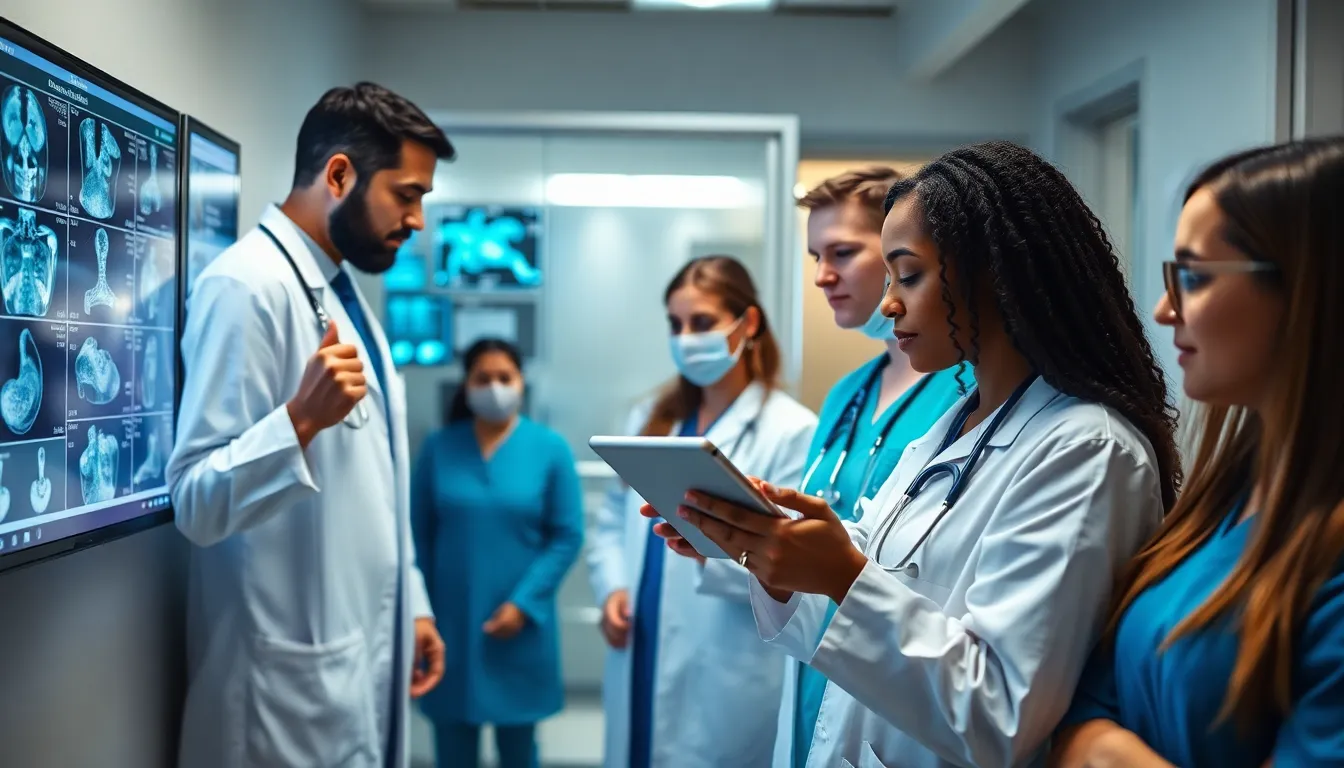
AI is transforming various sectors by enhancing efficiency and innovation. Significant advancements occur particularly in healthcare and creative industries.
Healthcare Innovations
Healthcare benefits immensely from AI applications. Predictive analytics uses patient data to forecast health issues, allowing for proactive treatments. AI systems streamline administrative tasks, reducing the burden on healthcare professionals. Diagnosis relies on AI algorithms that analyze medical images with precision, improving speed and accuracy. Additionally, virtual health assistants provide personalized patient care, addressing inquiries and managing appointments. Significant advancements in drug discovery emerge as AI expedites the research process, potentially cutting development time by years. This transformative influence on healthcare not only enhances patient outcomes but also optimizes the overall efficiency of healthcare systems.
Creative Industries
Creative industries experience remarkable shifts due to AI’s influence. Automated design tools assist graphic designers in generating unique concepts quickly. Musicians leverage AI algorithms to compose original music, fostering new collaborative opportunities. Visual artists utilize AI-generated images as inspiration, proving beneficial during creative blocks. Advertising agencies employ AI for targeted content creation, optimizing marketing strategies. Film production also sees AI integration in script analysis and audience prediction, improving the likelihood of box office success. These advancements in the creative landscape signify AI’s role as a powerful partner in shaping artistic expression and driving innovation.
Benefits of AI Artificial Intelligence
AI technology brings numerous advantages, significantly influencing various industries. Its capacity to streamline processes and improve decision-making contributes to optimizing workflows.
Efficiency and Productivity
AI enhances efficiency by automating repetitive tasks, which frees up time for artists and professionals to focus on creativity. Automated processes reduce human error, ensuring higher quality in outputs. For instance, machine learning algorithms analyze vast amounts of data faster than any person could. This speed translates into quicker project completions, benefiting industries like graphic design and film production. AI tools also assist in managing time effectively by prioritizing tasks. With enhanced workflow management, teams create more productive environments.
Enhanced Decision-Making
AI supports informed decision-making by analyzing data patterns that humans might overlook. It evaluates various possible outcomes based on historical information, significantly improving accuracy in predictions. Algorithms process real-time data, allowing for agile responses in dynamic environments. For example, AI aids marketers by analyzing consumer behavior, leading to better-targeted campaigns. In healthcare, AI applications assist professionals in accurately diagnosing conditions based on patient data. Such data-driven insights empower individuals and organizations to make strategic decisions confidently.
Challenges and Concerns
Challenges and concerns surrounding artificial intelligence in the art sector warrant careful consideration. Various ethical questions arise regarding the integrity and ownership of AI-generated pieces.
Ethical Considerations
Authenticity remains a significant ethical issue within AI art. Debates frequently center on whether AI creations constitute genuine artistry or merely derivative works. Many experts highlight the difficulty in ascribing credit, particularly when algorithms replicate human styles. The risk of plagiarism also surfaces, as artists fear their techniques might be mimicked without proper acknowledgment. Institutions increasingly call for regulations to address these dilemmas, ensuring that human creators maintain their rightful place in the artistic narrative. Ethical standards must evolve to accommodate the new dynamics introduced by AI, helping to safeguard the integrity of creative expression.
Job Displacement
Job displacement emerges as another critical concern in the realm of AI art. Artists and designers may face challenges as machine-generated content rises in popularity. Many fear that AI tools could replace human roles, leading to fewer opportunities in creative fields. However, the technology also creates new avenues for collaboration, where human creativity interacts with automated processes. Upskilling can mitigate risks, allowing artists to adapt to evolving demands in the industry. Supporting educational initiatives ensures that creativity thrives alongside innovation. Addressing job displacement not only fosters resilience in creative careers but also cultivates an environment where both humans and machines coexist harmoniously.
Future Trends in AI Artificial Intelligence
Emerging trends indicate that AI will play a crucial role in various creative domains. Advancements in deep learning techniques enhance AI’s ability to understand and mimic artistic styles more effectively. Tools that leverage these developments enable artists to blend their unique styles with AI-generated outputs, expanding possibilities for collaboration.
Increased integration of AI in design and production processes reveals opportunities for optimizing efficiency. Companies utilize AI algorithms to predict consumer preferences, allowing marketers to tailor campaigns with pinpoint accuracy. This data-driven approach fosters a more consumer-centric environment.
Growth in the availability of AI art platforms democratizes artistic creation. Individuals without formal training now engage in art-making processes, reflecting a shift toward inclusive creativity. Platforms open channels for diverse voices that enrich the cultural landscape.
Concerns about the ethical implications of AI-generated art persist. Discussions around attribution and ownership shape the future regulatory framework. As institutions strive to address these challenges, ongoing dialogues spark interest among artists and technologists alike.
Job displacement remains a pressing issue as automation advances. Yet, many industry leaders advocate for balancing technology with human creativity. Upskilling initiatives empower artists to thrive in an AI-enhanced landscape, ensuring they adapt alongside technological evolution.
The future of AI in art is intertwined with its application across other sectors. Industries beyond art, like healthcare and entertainment, tap into AI’s potential for innovative solutions. Collaboration between sectors promotes cross-disciplinary projects, paving the way for groundbreaking advancements.
The landscape of art is undeniably evolving with the integration of artificial intelligence. As AI tools enhance creativity and streamline processes, they also challenge traditional notions of artistry and originality. This duality sparks vital conversations about the future of human creativity in a world increasingly influenced by technology.
While concerns about authenticity and job displacement linger, the potential for collaboration between human artists and AI presents exciting opportunities. Embracing these advancements can lead to innovative artistic expressions and a richer cultural environment. The journey ahead will require a balance between leveraging AI’s capabilities and preserving the integrity of human creativity. As this dynamic relationship unfolds, it promises to redefine the essence of art and innovation for generations to come.

